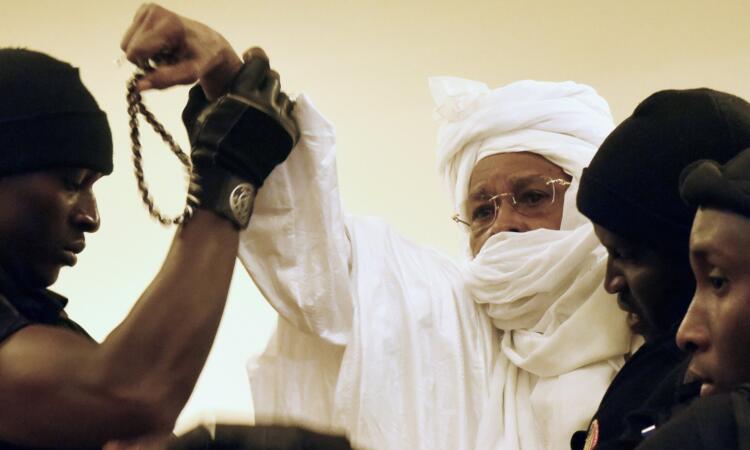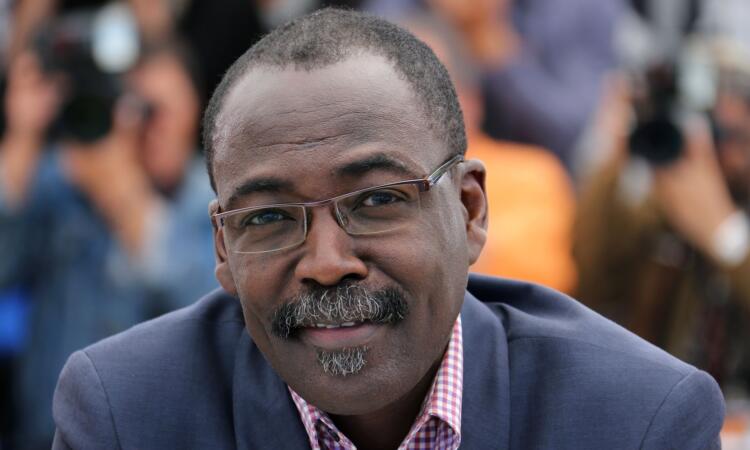Just over a year ago, a Senegalese court found former dictator Hissène Habré of Chad guilty of torture, rape, war crimes and crimes against humanity in a landmark verdict decades in the making against a U.S. Cold War-era ally.
Mr. Habré orchestrated the killing and torture of tens of thousands of political prisoners during his 1982-1990 rule over the impoverished desert country, presiding judge Gberdao Gustave Kam told the court. Habré was then sentenced to life in prison – becoming the first African former head of state to be convicted in continental Africa, and the first former head of any state to be convicted of crimes against humanity by the courts of another country.
In the video immediately below, some of Habré’s victims react to the ruling and sentencing soon thereafter.
This news was certainly timely, as Chadian filmmaker Mahamat-Saleh Haroun’s documentary film about Habré, his victims, and one of Africa’s least known mass killings, premiered at the Cannes Film Festival just 2 weeks before the verdict was given (in May 2016).
Maybe a foreshadowing of what was to come, Haroun’s Hissène Habré, A Chadian Tragedy focuses on the dictator and Chad’s president from 1982 to 1990, who has been dubbed “Africa’s Pinochet” because of the notorious atrocities committed during his eight-year rule. A Commission of Inquiry formed after he was deposed in 1990 said his government carried out some 40,000 politically motivated murders and 200,000 cases of torture in the eight years he was in power. His dreaded political police force – the Documentation and Security Directorate (DDS) – was accused of some of the worst abuses.
Victims had been trying to bring him to justice for 23 years. And in 2013, Habré’s arrest in Senegal marked the beginning of the end of a long combat for the survivors of his regime, leading to his court trial and life sentencing 3 years later, in 2016. Habre was finally brought to justice at a special tribunal in Senegal, where he had initially fled into exile.

In the film, accompanied by the Chairman of the Association of the Victims of the Hissène Habré Regime, filmmaker Mahamat Saleh Haroun goes to meet those who survived this tragedy and who still bear the scars of the horror, physically and emotionally. It is through their courage and determination that the victims accomplish an unprecedented feat in the history of Africa: that of bringing a Head of State to trial (and even more significant now that he’s been actually convicted, setting a precedent).
Director Haroun told the press at Cannes that he wanted to cast a light on what he called “this genocide” largely ignored by the outside world “because it was some business of the blacks” carried out behind closed doors.

Chad’s foremost filmmaker whose film Grigris competed for the Palme d’Or at Cannes in 2013, Haroun added that he wanted to see “if was it possible to still live together after such monstrosities,” asking the question, “Can survivors still find a place for forgiveness in their hearts?”
And given last year’s verdict, the film becomes even more noteworthy, after not attracting any immediate distribution deals following its Cannes Film Festival premiere. A year later, after stops at premiere festivals including Toronto and New York, the film is starting to get more Stateside coverage, following an acquisition of all distribution rights by US indie distributor Icarus Films, who will open the film for a week-long – September 21 to 27, 2017 – (and possibly longer, depending on how well it’s received) run at New York’s MoMA theaters, presented in collaboration with UniFrance.
Whether it’ll open in other cities after the NYC run isn’t public information at this time. But Hissène Habré, A Chadian Tragedy is a must-see for New Yorkers, so catch it on the big screen if you can! It may be your only opportunity.
Watch 2 clips from the film – all subtitled in English – and all embedded below, giving you a glimpse at what to expect.

